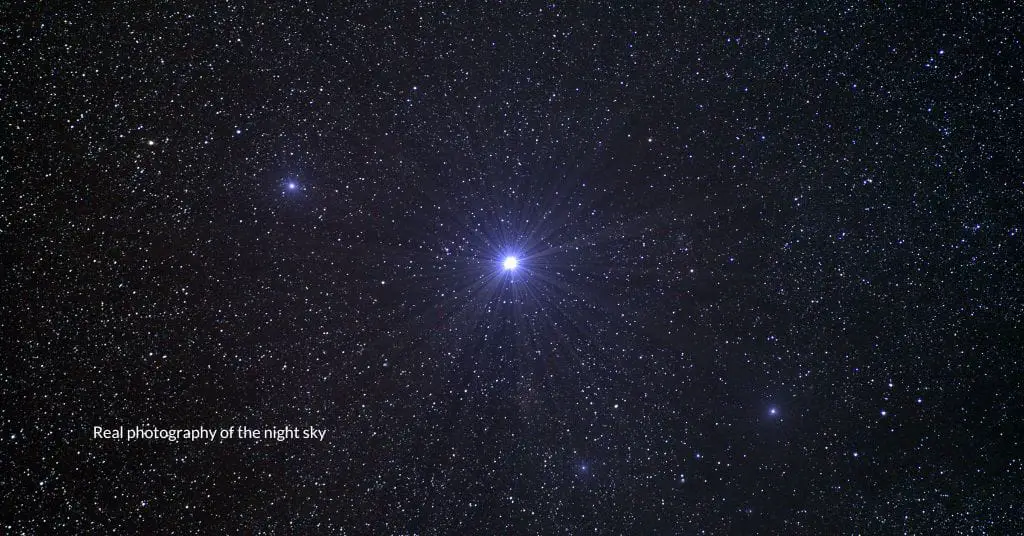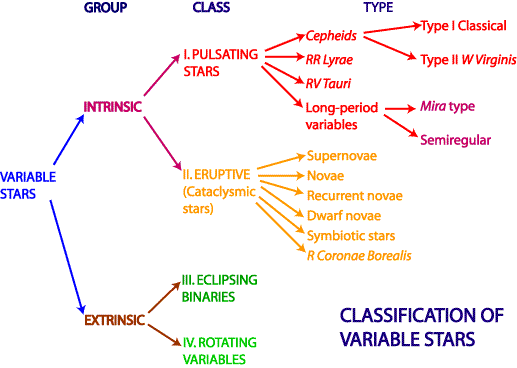Why target variable stars? It helps to improve your ability to distinguish faint objects when out stargazing. Variable stars are high on the scale of star magnitude and practicing to observe these increases your eye’s sensitivity for detecting brightness differences.
John Percy authored “Understanding Variable Stars”. The multitude of types makes them interesting. Using your home telescope you can challenge yourself to find them in the pursuit of helping astronomy. Read on…
Title on the subject of variable stars
available at Amazon (affiliate link)
It’s easier to sight variable stars than other targets in the night sky of light-polluted areas such as cities. And you can become part of a bigger mission to observe variables to monitor their brightness and so add to astronomical knowledge.
What are variable stars interesting?
Variable stars vary in brightness for a number of reasons. There can be several reasons for this.
Unlike our Sun, which remains fairly stable, these vary their light output. Some are stars transiting from one stage of their evolution to another. Some are in the process of dying.
Understanding all the different variable stars helps astronomy in that it can reveal information on the evolution and death of stars.
Types of variable stars
Two main types: extrinsic (or external) where the brightness is due to an external driver and intrinsic (or internal) where brightness is driven internally.
Intrinsic subtypes:
- Pulsating variables include LPVs and Cepheids, long period variables (LPVs) that include periodic types such as Mira, and semi-regular and irregular variables, which are an assortment of random types.
- Eruptive or Cataclysmic stars, which include the novas — which stand out since their outer layer explodes and the rare Supernovas, which are when the star dies

Extrinsic subtypes:
- Eclipsing binaries of the Algol class include the multiple stars of Beta Persei, Beta Lyrae, and BL Telescopium
- Rotation variables

They include:
- Pulsating variables, such as the long-period ones (LPVs) and the Cepheids, such as Delta Cephei, are regular and predictable and so can serve as yardsticks to measure distances to galaxies beyond the Milky Way.
The periodic LPVs include the red giants within the Mira variables, e.g. Mira (Omicron Ceti). - Eruptive types, include the Novas, rare Supernovas, and R Coronea Borealis.
- Eclipsing binaries (EB), have equal brightness, but due to change in their orbit that creates an eclipse, the brightness of one will vary.
- Rotating variables, which show minor variation in light emitted as a result of starspots — dark or bright spots, or patches on their surfaces.
What are examples of variable stars?
Examples of variable stars include the eclipsing variables of Algol: Beta Persei, Beta Lyrae, and BL Telescopium, which are multiple stars.
Look for the supergiant BL Telescopium in Telescopium, a southern hemisphere constellation best seen from latitudes south of 33º from June to August. Its visible brightness is max 7.1–min 9.1, which means it’s outside naked eye viewing, at –6, but within the range for astronomy binoculars.
Another southern hemisphere example is the Eruptive variable of BV Centauri, a dwarf nova in the constellation of Centaurus. With an apparent magnitude of 10.7 to 14.0, you’ll need a telescope.
Examples of Mira variable stars:
- R Pegasus
- Omicron Ceti
- R Horologii
- L2 Puppis
- R Carinae
- L Carinae
- R Leonis
- S Carinae
- T Centaurii
- RS Scorpii
- RR Scorpii
How many variables are there to see?
- With the naked eye, there are about a dozen or so you can pick up with good conditions at the right time. An example is the Delta Cepheid, L Car, which has a brightness of 3.3–4.2. Also Mira (Omicron Ceti ) with a brightness of 2.
- With astronomy binoculars, there are roughly 100 or so you can identify.
- With a good backyard telescope, you are looking at thousands.
Help monitor variable stars
American Association of Variable Star Observers (aavso.org) is the place to log your information and they have manuals to download to help you do this to advance the science of variable stars.
The aavso.org site offers variable star lists and charts to print. For beginners, look for the Getting Started dropdown for the Manual for Visual Observing of Variable Stars.
If this is something you would like to get into, AAVSO have a list of easy stars to begin with.
Resources
To find out more about identifying and monitoring variable stars, check out these sites:
AAVSO | Australian National Telescope Facility | Variable Stars South

